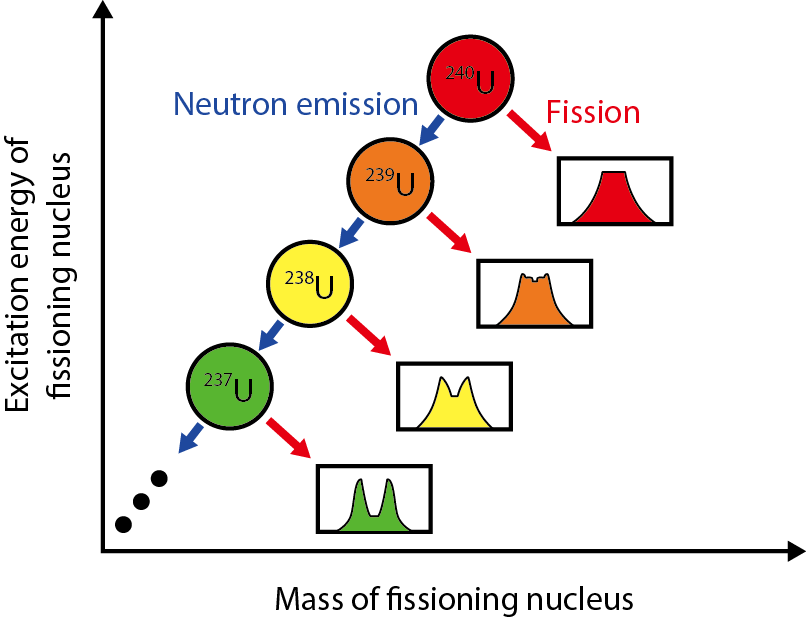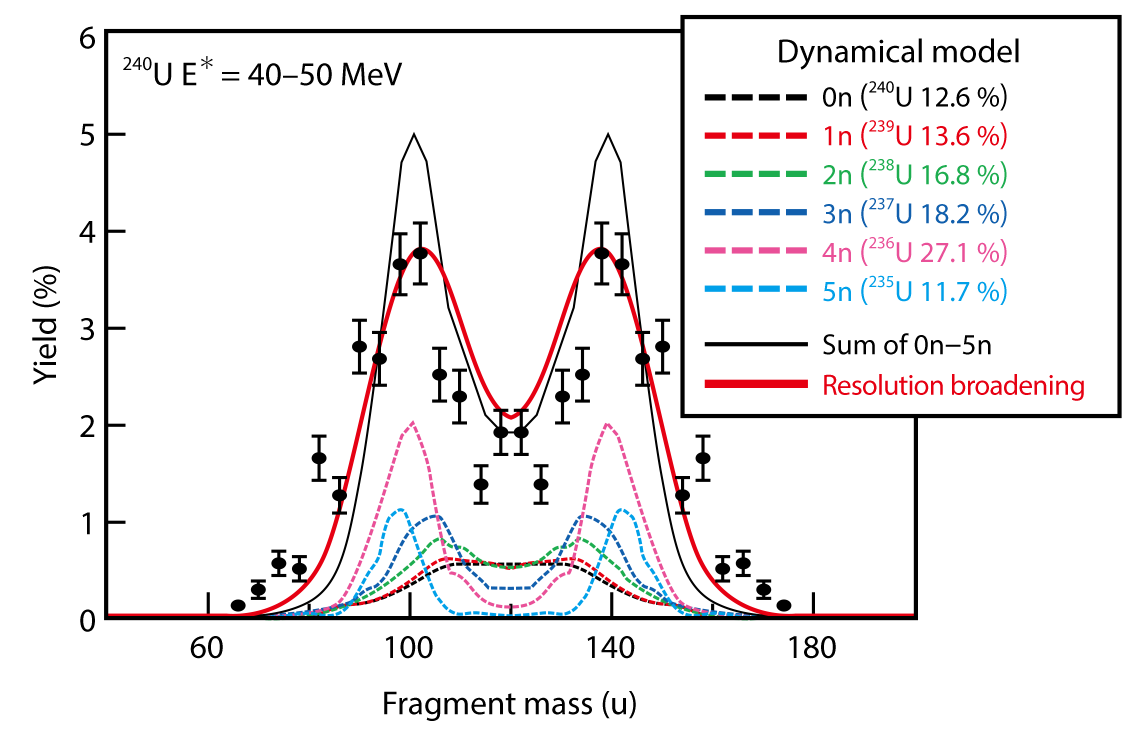
Fig.3-2 Competition between fission and neutron emission

Fig.3-3 Nuclear splits in high-energy fission
The management of radioactive wastes, such as trans-uranium accumulating in light water reactors, is among the most urgent issues in the use of nuclear power. Some of these nuclides survive irradiation with thermal neutrons in the light water reactor but can decay via fission when bombarded with higher-energy neutrons. Under this circumstance, a fissioning nucleus has a higher excitation energy compared with a fissioning nucleus in a light water reactor. To develop a fission-based nuclear transmutation technology, fission at high excitation energies must be clearly understood.
Nuclear fission is a process of a nucleus deforming gradually and finally splits into two lighter nuclei. This process can be investigated by observing the mass balance between the two daughter fragments, the so-called fission fragment mass distribution (FFMD). However, observing the FFMDs of highly excited nuclei has been prevented by an experimental difficulty, as described later. Thus, the fission mechanism at high energies remains poorly understood.
Herein, we produced a multitude of nuclides from the 18O + 238U reaction at the JAEA tandem accelerator facility and obtained their FFMDs over a wide range of excitation energies. A nucleus with a high excitation energy decays either by fission or by neutron emission. The latter creates a different nucleus with a lower excitation energy than the initial nucleus. Fig.3-2 demonstrates the competition between fission and neutron emission for the initial 240U nucleus produced with a high excitation energy. The experimentally observed FFMDs are contributed not only by the 240U nucleus but also by lower-excited 239, 238, 237,...U nuclei. The contributions from each nuclide cannot be separated, leading to the aforementioned experimental difficulty.
In this study, we separated these contributions by combining a dynamical fission model with the neutron emission before fission. Fig.3-3 presents an example of the obtained results. The closed circles plot the FFMD of the initial highly excited nucleus 240U. As shown by the dashed curve, this FFMD comprised the FFMDs of six nuclides. We present the first pure FFMD at high excitation energies, i.e., the FFMD of 240U (black dashed curve in Fig.3-3), which will promote high-energy fission research. To further understand the fission mechanism, we are planning to conduct measurements of prompt fission neutrons together with FFMDs. Such studies will help the evaluation of as-yet unmeasured nuclear data and the development of fission-based nuclear transmutation technology.
This study was supported by “Comprehensive study of delayed neutron yields for accurate evaluation of kinetics of high burn-up reactors” and “Development of prompt-neutron measurement in fission by surrogate reaction method and evaluation of neutron-energy spectra” by the Ministry of Education, Culture, Sports, Science and Technology (MEXT), Japan.